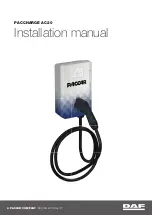
Consumer Information
This has been prepared as required of
all manufacturers of passenger cars
under Title 49, Code of U.S. Federal
Regulations, Part 575 pursuant to the
“ National Traffic and Motor Vehicle
Safety Act of 1966’’.
Uniform Tire Quality Grading
Relevant tire grade information on tire
flanks.
All passenger car tires must conform
to federal safety requirements in addi
tion to these grades.
Treadwear
The treadwear grade is a comparative
rating based on the wear rate of the
tire when tested under controlled
conditions on a specified government
test course. For example, a tire
graded 150 would wear one and a half
(11/
2
) times as well on the government
course as a tire graded 100. The rela
tive performance of tires depends
upon the actual conditions of their
use, however, and may depart signifi
cantly from the norm due to variations
in driving habits, service practices
and differences in road characteris
tics and climate.
Traction “ A ", “ B” , “ C”
The traction grades, from highest to
lowest, are “ A ” , “ B” and “ C” and
they represent the tire’s ability to stop
on wet pavement as measured under
controlled conditions on specified
government test surfaces of asphalt
and concrete. A tire marked “ C” may
have poor traction performance.
Warning!
The traction grade assigned to this
tire is based on braking (straight
ahead) traction tests and does not
include cornering (turning) traction.
Temperature “ A ’’, “ B ” , “ C”
The temperature grades of “ A ” (the
highest). “ B ” and “ C” representing
the tire’s resistance to the generation
of heat and its ability to dissipate heat
when tested under controlled condi
tions on a specified indoor laboratory
test wheel. Sustained high tempera
ture can cause the material of the tire
to degenerate and reduce tire life, and
excessive temperature can lead to
sudden tire failure. The grade “ C”
corresponds to a level of perform
ance which all passenger car tires
must meet under the Federal Motor
Vehicle Safety Standard No. 109.
Grades “ B” and “ A ” represent higher
levels of performance on the labora
tory test wheel than the minimum
required by law.
Warning!
The temperature grade for this tire
is established for a tire that is prop
erly inflated and not overloaded.
Excessive speed, underinflation, or
excessive loading, either separately
or in combination, can cause heat
build up and possible tire failure.
Summary of Contents for 300 SDL turbo 126 D
Page 1: ......
Page 3: ...Owner s Manual 300SDLturbo Model 126 D 1987...
Page 13: ...14 15M 16M 17 18 11 Instruments and Controls...
Page 15: ...13 Instrument C luster...
Page 103: ...Index...
Page 108: ......
Page 109: ......
Page 113: ......













































